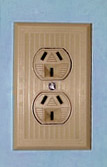General Discussion
Forum home - Go back to General discussion
|
Can anybody identify my radio? (re: Seeking brand and year of manufacture)
|
|
|
Return to top of page · Post #: 1 · Written at 8:33:31 PM on 17 April 2016.
|
|
|
|
Location: Clare, SA
Member since 27 March 2016 Member #: 1894 Postcount: 513 |
|
Hi I have finally pulled her apart and repaired the valve cap as instructed on my last post {Seeking brand and year of manufacture) I have sent through some photo's of the chassis, inside and out. It is not completely transformerless as I first thought, there is a small transformer inside. After discovering 90 odd volts at the antenna, after receiving a tingle when connecting the aerial, I did some more checking to find the chassis indeed live at 240v ac, however not shocking to the touch, fortunately, I should be a bus driver, as I'm a lousy conductor... Well I corrected the polarity and the old girl works even better! I found with the chassis now neutral, the aerial now has 0v and inside there is 249v in various places as well as 435 and 25v after the barrater... Please if anybody can help me identify my o'l girl I will be very grateful. Cheers! 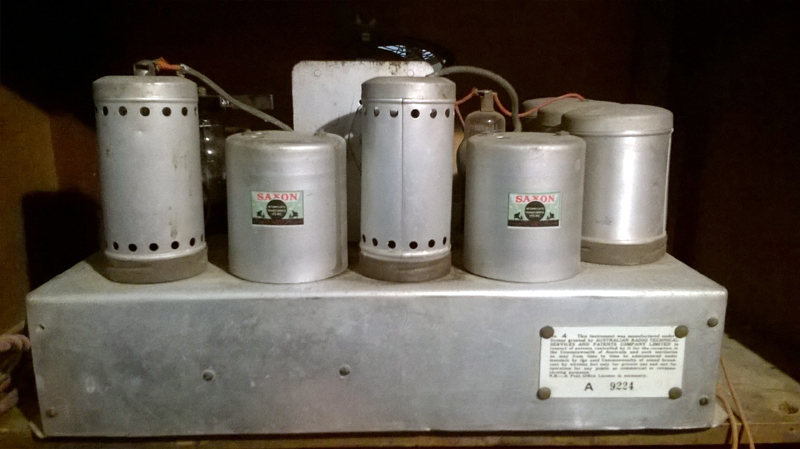 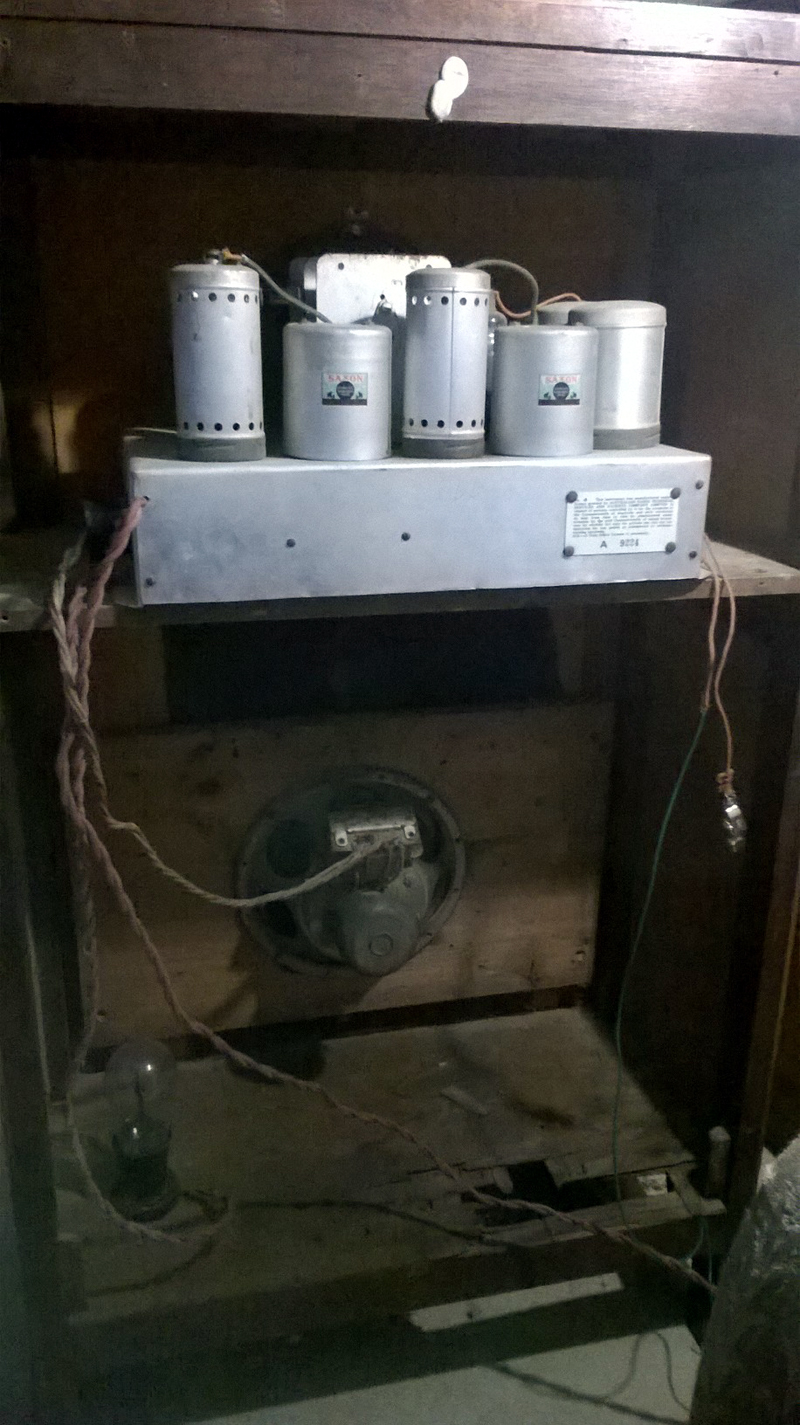 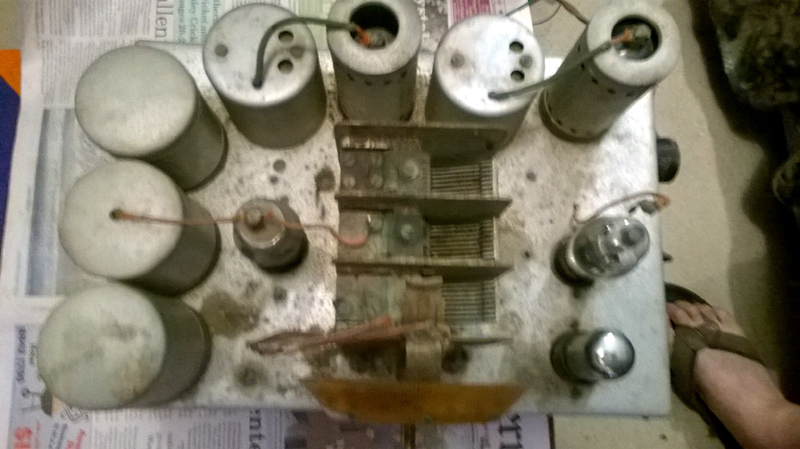 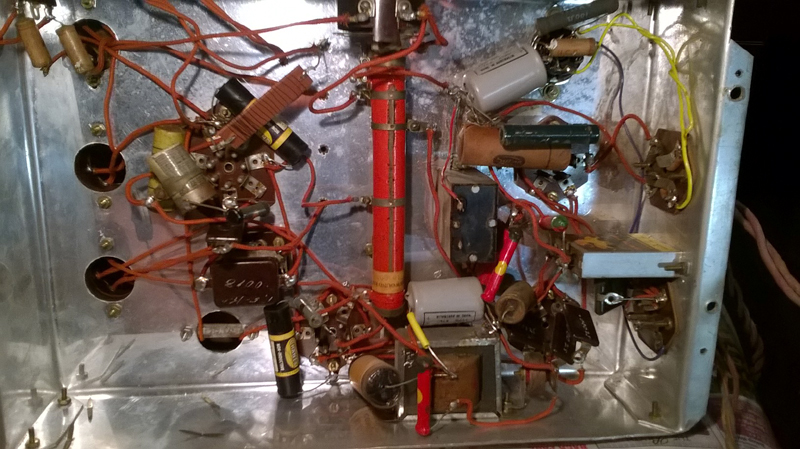 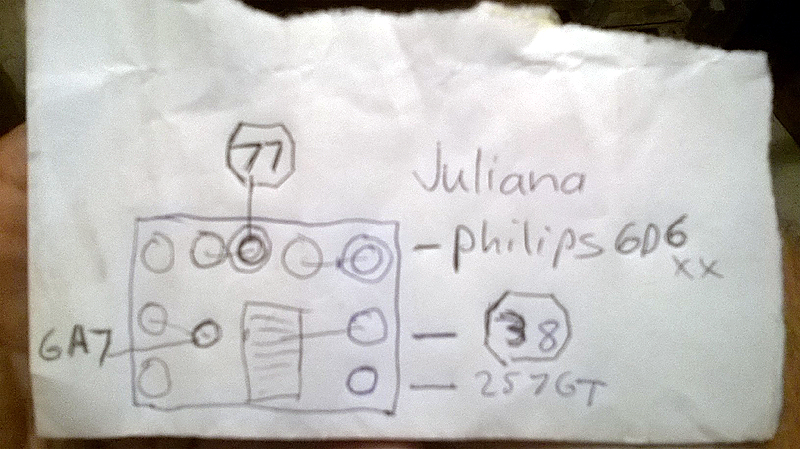 |
|
|
Return to top of page · Post #: 2 · Written at 10:11:20 PM on 17 April 2016.
|
|
|
|
Location: Hill Top, NSW
Member since 18 September 2015 Member #: 1801 Postcount: 2233 |
|
My last post. |
|
|
Return to top of page · Post #: 3 · Written at 10:27:48 PM on 17 April 2016.
|
|
|
|
Location: Sydney, NSW
Member since 28 January 2011 Member #: 823 Postcount: 6911 |
|
I did some more checking to find the chassis indeed live at 240v ac |
|
|
Return to top of page · Post #: 4 · Written at 11:25:07 PM on 17 April 2016.
|
|
|
|
Location: Clare, SA
Member since 27 March 2016 Member #: 1894 Postcount: 513 |
|
Ok, sorry, photo's havn't come up yet, but the valves are from the rectifier valve , 257GT, on the RH front, anticlockwise, centre RH is a 38 surrounded by an octagonal border, the rearmost RH valve is a Philips 6D6, the center rear valve is a 77 within the same type of octagonal borderline as the 35, then on the LH Centre next to the variable capacitor is a 6A7. All have top caps, except the rectifier and all are Radiotron with the exception of the Philips. (+0+) |
|
|
Return to top of page · Post #: 5 · Written at 11:35:44 PM on 17 April 2016.
|
|
|
|
Location: Clare, SA
Member since 27 March 2016 Member #: 1894 Postcount: 513 |
|
Thank you GTC, yes I can imagine, I used to have ice cream containers of valves as a kid I pulled from old TV's at the dump, and got many old radio's working with them back in the late 70's, I sure wish I had them now! I'm revisiting and re-discovering my old hobby now! I used to love old capacitors too, getting the biggest I could find and remember soldering wires to them and charging them direct from the power point, with an almighty whine, then zapping the bejeezus out of moths and blow flies around the window, more afraid of my mum or dad catching me than what I was doing, until getting thrown across the room by one! Been very careful how I handle things since then! |
|
|
Return to top of page · Post #: 6 · Written at 3:42:12 AM on 18 April 2016.
|
|
|
|
Location: Sydney, NSW
Member since 28 January 2011 Member #: 823 Postcount: 6911 |
|
"257GT" is likely to be a 25Z5 rectifier. |
|
|
Return to top of page · Post #: 7 · Written at 9:07:54 AM on 18 April 2016.
|
|
|
|
Location: Oradell, US
Member since 2 April 2010 Member #: 643 Postcount: 835 |
|
As Aussie power plugs can only be connected to the receptacle in one way, you should wire the radio such that the chassis of the "hot chassis" set and the B- supply is directly connected to the mains neutral (grounded conductor). And the hot is the wire that the power switch controls. This of course assumes that the power point is correctly wired to code. |
|
|
Return to top of page · Post #: 8 · Written at 12:21:56 PM on 18 April 2016.
|
|
|
|
Location: Hill Top, NSW
Member since 18 September 2015 Member #: 1801 Postcount: 2233 |
|
I'm not sure if it was "mandated" back in the 1930's. Certainly, 99% of locally-made radios follow that rule. |
|
|
Return to top of page · Post #: 9 · Written at 12:58:48 PM on 18 April 2016.
|
|
|
|
Location: Sydney, NSW
Member since 28 January 2011 Member #: 823 Postcount: 6911 |
|
a lot of old houses had them wired up at random and could easily be wrong |
|
|
Return to top of page · Post #: 10 · Written at 1:06:35 PM on 18 April 2016.
|
|
|
|
Location: Sydney, NSW
Member since 28 January 2011 Member #: 823 Postcount: 6911 |
|
I thought that power transformers were mandated in Aussie radios. |
|
|
Return to top of page · Post #: 11 · Written at 2:44:17 PM on 18 April 2016.
|
|
|
|
Location: Oradell, US
Member since 2 April 2010 Member #: 643 Postcount: 835 |
|
If you ever drop by my place, you'll see a few of these |
|
|
Return to top of page · Post #: 12 · Written at 7:00:12 PM on 18 April 2016.
|
|
|
|
Administrator
Location: Naremburn, NSW
Member since 15 November 2005 Member #: 1 Postcount: 7590 |
|
Sydney's CBD still had operational DC mains into the 1980s. This was mainly for lifts and escalators, which were all either converted to run on AC mains or permanently removed from service prior to the shutdown. ‾‾‾‾‾‾‾‾‾‾‾‾‾‾‾‾‾‾‾‾‾‾‾‾‾‾‾‾‾‾‾‾‾‾‾‾‾‾‾‾‾‾‾‾‾‾‾‾‾‾‾‾‾‾‾‾‾‾‾‾‾‾‾‾‾‾‾‾ A valve a day keeps the transistor away... |
|
|
Return to top of page · Post #: 13 · Written at 7:36:01 PM on 18 April 2016.
|
|
|
|
Location: Calista, WA
Member since 1 April 2014 Member #: 1540 Postcount: 81 |
|
"circuit power fuse had been replaced by a paper clip. ‾‾‾‾‾‾‾‾‾‾‾‾‾‾‾‾‾‾‾‾‾‾‾‾‾‾‾‾‾‾‾‾‾‾‾‾‾‾‾‾‾‾‾‾‾‾‾‾‾‾‾‾‾‾‾‾‾‾‾‾‾‾‾‾‾‾‾‾ Baz VK6MU |
|
|
Return to top of page · Post #: 14 · Written at 7:36:57 PM on 18 April 2016.
|
|
|
|
Location: Clare, SA
Member since 27 March 2016 Member #: 1894 Postcount: 513 |
|
Interesting, but wouldn't a DC mains need to be around the same voltage as AC, or wouldn't it fry the radio? |
|
|
Return to top of page · Post #: 15 · Written at 8:01:51 PM on 18 April 2016.
|
|
|
|
Administrator
Location: Naremburn, NSW
Member since 15 November 2005 Member #: 1 Postcount: 7590 |
|
DC mains in Sydney was mostly 240 volts. Switches to control lights were a lot larger though as they had to be designed to quench sparks. This isn't a requirement for AC due to the voltage being at nought 100 times per second. ‾‾‾‾‾‾‾‾‾‾‾‾‾‾‾‾‾‾‾‾‾‾‾‾‾‾‾‾‾‾‾‾‾‾‾‾‾‾‾‾‾‾‾‾‾‾‾‾‾‾‾‾‾‾‾‾‾‾‾‾‾‾‾‾‾‾‾‾ A valve a day keeps the transistor away... |
|
|
You need to be a member to post comments on this forum.
|
|

Sign In

Vintage Radio and Television is proudly brought to you by an era where things were built with pride and made to last.
DISCLAIMER: Valve radios and televisions contain voltages that can deliver lethal shocks. You should not attempt to work on a valve radio or other electrical appliances unless you know exactly what you are doing and have gained some experience with electronics and working around high voltages. The owner, administrators and staff of Vintage Radio & Television will accept no liability for any damage, injury or loss of life that comes as a result of your use or mis-use of information on this website. Please read our Safety Warning before using this website.
WARNING: Under no circumstances should you ever apply power to a vintage radio, television or other electrical appliance you have acquired without first having it checked and serviced by an experienced person. Also, at no time should any appliance be connected to an electricity supply if the power cord is damaged. If in doubt, do not apply power.
Shintara - Keepin' It Real · VileSilencer - Maintain The Rage

